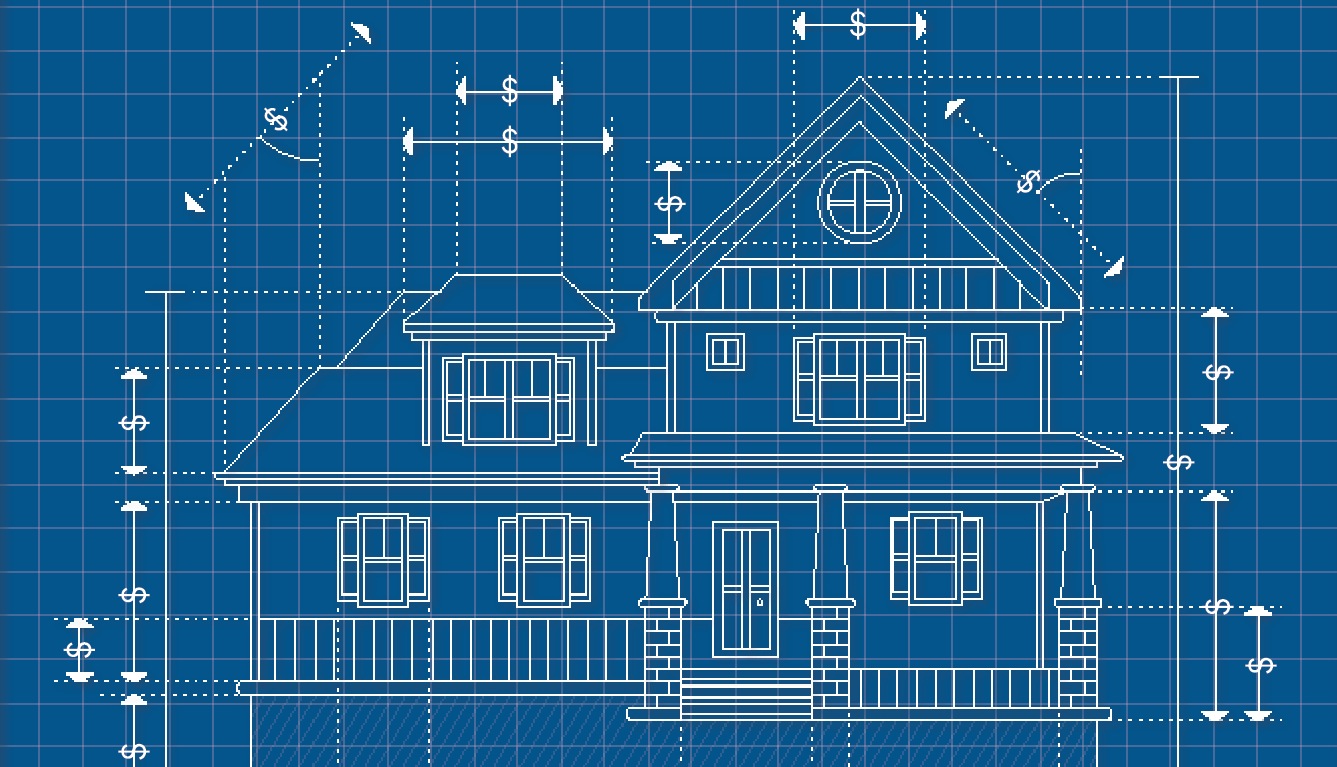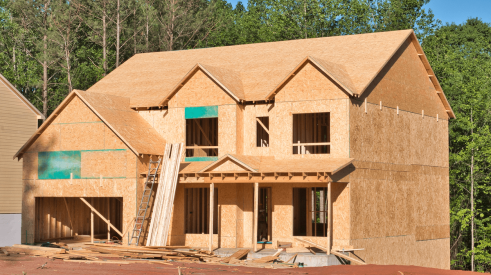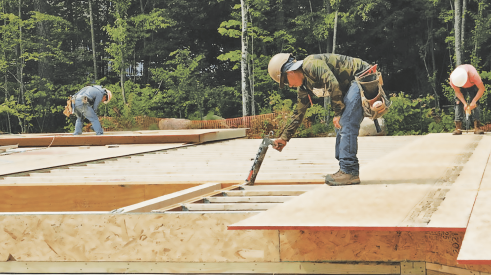Gone are the days when an architect or design department could design new product in a vacuum and then throw it over the wall to the purchasing department. Design is a collaborative effort and should include input from sales, marketing, construction, purchasing, warranty, focus groups, and even suppliers and trades.
A systemic approach to architectural design and purchasing translates to better value for the homeowner. In addition, optimizing materials and improving constructability and warrantability will reduce your time to market. There are multiple ways to do this.
Involve Trades and Suppliers Early
Your purchasing people can and should involve key suppliers and trades during design development. It’s too late for trades to make recommendations if the first time they see a new design is during bidding. Involvement should happen during the Design Development (DD) phase and then during the Construction Documentation (CD) phase. Here’s the kind of difference this can make.
• A good structural engineer working with your framer can reduce lumber by as much as 30 percent. You’re cutting down on over-framing and waste. Engineers typically make sure you have a stacked frame on the structural side so the house is performing as a system rather than as individual components. Engineers then look at non-load-bearing areas of the frame to adjust wall stud spacing, use single top plates, eliminate jack studs, use ladder headers for larger openings, remove headers for smaller rough openings, and reuse bottom plate material that has been removed from the door’s rough opening portion of the wall panel, reapplying it to the door header.
• Panelizers can help reduce materials and waste. By working with your framer, you can optimize panel breaks and lengths, end wall panel sections where king studs are needed, start panels with full stud bays, increase panel lengths up to 14 feet, standardize subcomponents such as ladders to 16 or 24 inches, reduce the number of panels required per home, and recommend minor window location changes to minimize the use of expensive tempered glass.
• Subs can help improve configurations. Electricians can tell you the best and most economical place to put load centers, outlets, and switches. They can review door swings for conflicts. Plumbers can help identify potential framing problems as they relate to drains, vent stacks, and plumbing chases as well as water heater location and shared plumbing walls. An MEP engineer or HVAC contractor can identify problems with duct runs and system placement. They can also evaluate zoning and identify ways to make best use of an HVAC system. The list goes on, from your foundation contractor to your finish carpenter. Even your flooring contractor can help with roll sizes, minimizing T-seams, and getting the most out of quantities.
Create Clear Construction Documents
Document review is another phase during which suppliers and trades can provide valuable feedback. Because English is a second language for many trades, good construction documents should include illustrations wherever possible. Omit them at your own peril: Construction documents that fail to cross language barriers won’t be followed. Documents should be easy to understand with neither too much nor too little detail. Early on, make sure that your project supervisor reviews them. Good documents help the framer, drywall installer, flooring contractor, and other subs minimize waste. The vigilance will pay off, especially when a floor plan is built multiple times.
 Keep in mind material costs. Standard OSB is typically cheap but may have additional costs, so depending on the situation, premium-edge OSB floor sheathing might be a better buy. Photo: Rick/Creative Commons.
Keep in mind material costs. Standard OSB is typically cheap but may have additional costs, so depending on the situation, premium-edge OSB floor sheathing might be a better buy. Photo: Rick/Creative Commons.
Improve Material Selection and Utilization
Materials account for about half of vertical construction costs. Opportunities to optimize materials during architectural design include selection, utilization, and standardization. A combined architecture and purchasing function can look at cost-effective materials that enhance design flexibility. For example, engineered wood products allow for greater spans, more open spaces, and better-performing floor systems.
• Material selection is about more than price. Selection criteria should include research on new products that perform better, cost less, save labor, reduce warranty expenses, or otherwise enable a builder to sell more homes or make better margins. Compare cost and value of one material with another. Some products have a low price but cost too much to use. Standard OSB has a low price, for example, but in some parts of the country there are additional costs. If you’re in a region that gets a lot of rain and your construction cycle is long, it’s probably worth specifying a premium-edge OSB floor sheathing (otherwise, you’ll be grinding off the edge swell). Think of it as purchase price + labor + repair = cost.
• Alternative materials play a key role in selection. Interior door slabs that cost the same as a six-panel pattern but look fresh, a split jamb that installs with less labor than a flat jamb, push-fit valves that push on without tools or glue compared with traditional valves, prefinished molding, and interior doors versus raw or primed are all examples of alternative materials.
• Material utilization leads to cost and labor savings. Utilization—simply, getting the most out of your materials—means knowing material lengths, sheet sizes, roll dimensions, and package quantities. Making that information available to your architect or design department will enable better material utilization. Material utilization leads to labor savings, too. If a room is sized with the floor and shower tile dimensions in mind, the tile installer will have fewer cuts to make, with less labor, less trash in the Dumpster, and fewer landfill fees.
Standardize Materials
Material standardization involves minimizing the number of SKUs you use. How many different-size windows do you really need in your plan component library? While the answer will vary by builder and market, one thing is certain: You don’t need the entire catalog. Architects and designers can use standard materials available in the supply chain without sacrificing design. The pros of using readily available materials include: lower cost, shorter lead time, predictable construction cycle time, and less scrap.
By using standard SKUs and avoiding special order items, and pro dealers and other distributors, builders are able to get materials more quickly. More volume on standard SKUs improves the chances that the pro dealer will stock the item (no small thing if you need replacement materials because of jobsite theft). Non-stock materials can take weeks to get from a manufacturer or a two-step distributor, resulting in cycle-time delays. Standard SKU volume also helps improve a dealer’s inventory turnover and thereby frees up operating capital and minimizes their obsolete material write-off.
Using standard materials helps installers, too. Familiarity with certain SKUs means installers become more efficient, resulting in reduced labor and reduced rework. It can even affect your warranty costs to the degree that the material is properly installed.
Reduce Cycle Time
Efficiency is another benefit to combining design and purchasing. Rather than a traditional linear approach, a combined team can concurrently work through the design and construction documentation phases. This eliminates much of the rework associated with the process because potential issues with constructability and cost of a new design are resolved early on. Think about conflict detection: making sure that plumbing drains don’t collide with floor joists, that ducts don’t crash into LVLs, and that casing doesn’t crunch into the wall preventing the door from being installed. Working together will result in more complete designs that include best cabinet layouts, detailed material takeoffs, and standardized construction details.
Delivering plans to purchasing in enough time for bidding, option development, and loading into the system is crucial for cost management. Have you ever started selling a floor plan before you bid it out? Or sold options before you knew exactly what they cost to build? If you’ve been in the business a while, chances are the answer is yes. Synchronizing architecture and purchasing can minimize these occurrences.
Achieve More Thorough Design
With the forethought and planning outlined above, you can achieve more comprehensive and complete design. For example, designs should include 20/20 cabinet layouts and anchor-bolt layouts. Ever been to a jobsite where the foundation anchor bolt was in the same location as the wall panel stud? The framer has to break off the stud and then drill through the plate and into the foundation to replace it—a costly and time-consuming process. A less-than-thorough design may lower the price you pay for architectural design, but it will ultimately increase your costs. At the end of the day, it’s not the price that shows up on the income statement, it’s the cost. Some of the examples named here may not sound like a lot, but they add up. Consider potential efficiency gain or material savings on an annualized basis. Whether you’re building 5, 500, or 5,000 homes a year, the little things add up in a hurry.
Advertisement
Related Stories
Single-Family Homes
What Does It Cost to Build a Single-Family Home?
A closer look at the itemized costs in each stage of construction for a single-family home
Quality Matters
5 Ways to Silence Squeaky Floors
Take these tips to heart to deliver quiet floors and satisfied homeowners
Construction
Proven Ways to Improve Jobsite Productivity
Consider these solutions for reducing cycle time, hard costs, dry runs, rework, miscommunication, and overall inefficiencies on the jobsite








